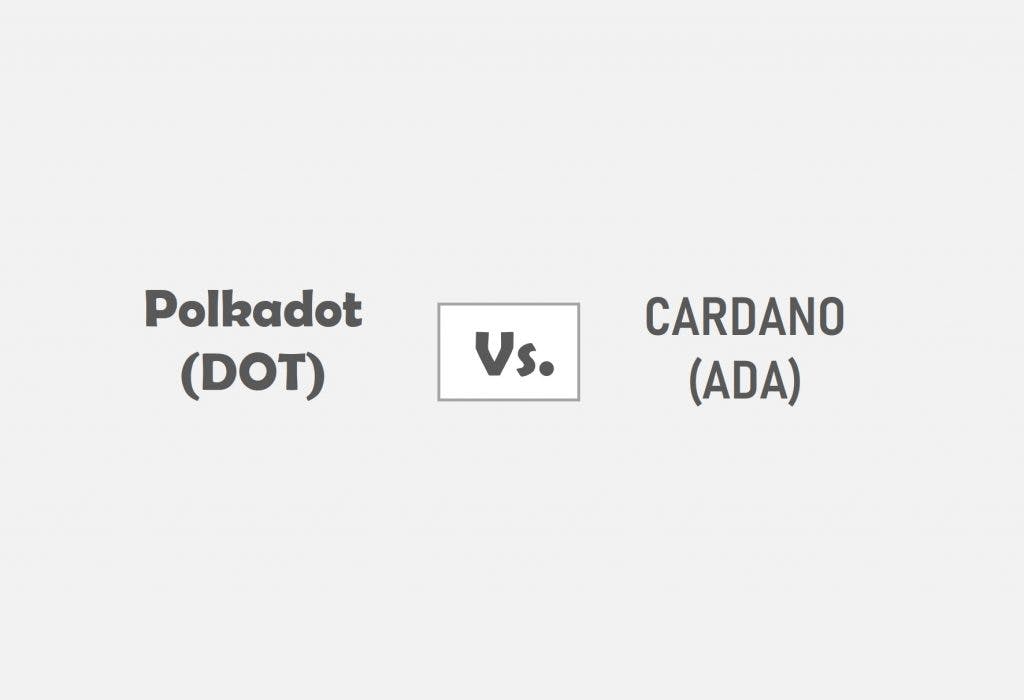
Technologies Powering Polkadot and Cardano
Cardano has emerged as Ethereum’s main rival in recent times clinging to the top 5 spots in the chart. As time passes, Ethereum faces increasing competition. Polkadot is another example.
In this article, we compared Polkadot and Cardano to determine which project has the greatest potential.
Blockchain technology is bringing about changes in various types of businesses, most notably in terms of transaction security and the elimination of the need for a third party. Blockchain technology is increasingly being used, and we are seeing issues and flaws.
As the use of blockchain technology grows, so does the number of computers on the public blockchain network. This leads to longer transaction times and higher transaction costs. Cardano and Polkadot are two projects that are attempting to address these issues.

Key Takeaways
• To improve scalability, Cardano is developing Hydra, a second layer solution as the goal is to achieve 2 million transactions per second (tps), which is roughly ten times the speed of a Polkadot.
• Validators protect the Relay Chain by staking DOT, validating collator proofs, and participating in consensus with other validators.
• Cardano employs the Ouroboros Proof-of-Stake (PoS) algorithm. This algorithm does not necessitate the purchase of expensive computer equipment and is simple to implement.
• A total of 5 million DOT tokens were sold at 0.109 ETH, representing a total value of more than $ 150 million.
What is Cardano (ADA)
Cardano is a public blockchain platform that allows you to create and run smart contracts. In terms of market capitalization, it ranks among the top five crypto projects. Charles Hoskinson, one of the founders of Ethereum, is the creator of Cardano.
Cardano addresses Bitcoin and Ethereum’s issues, such as high power consumption, slow transactions, and high transaction fees.
Cardano employs the Ouroboros Proof-of-Stake (PoS) algorithm. This algorithm does not necessitate the purchase of expensive computer equipment and is simple to implement.
Cardano’s Price Movement
| [mcrypto id=”4217″] |
When we compare the price movements of these two projects, we can conclude that both have experienced significant price increases in the last six months. Cardano (ADA) has risen from $0.16 in January 2021 and the coin keeps gaining momentum.
See Cardano’s price today.
Price of Cardano (ADA)
| [mcrypto id=”4219″] |
Polkadot (DOT) experienced slower growth, rising from $5 in January to the current price of $21. (representing a growth of over 400 percent ).
Prices are much lower now than they were a month ago. Cardano reached an all-time high (ATH) of $2.46, implying that current prices are roughly 40% lower than they were previously.
Polkadot, on the other hand, experienced a larger correction, with the price currently 55 percent lower than the ATH of around $50.
Cardano Blockchain is Now 100% Decentralized
Cardano has been working hard to decentralize its network as soon as possible. The Shelly upgrade was one of its initiatives in late July 2020, if you recall.
To begin the second quarter on a positive note, the blockchain network announced that block production is now 100 percent decentralized. In layman’s terms, what does this mean? This effectively means that the community stake pool operators are now solely responsible for block production.
In comparison, Bitcoin is said to rely on ten prominent mining pools, which account for more than 80% of block production. This significant milestone is undoubtedly encouraging for potential investors.
The fully decentralized network, in particular, makes it less vulnerable to 51 percent attacks and reduces other significant risks.
SEE ALSO: ADA Staking: the Ultimate Guide to Cardano Staking
SEE ALSO: Top 11 Best Cardano (ADA) Wallets for Staking & Storage
Polkadot (DOT)
A total of 5 million DOT tokens were sold for 0.109 ETH, representing a total value of more than $ 150 million. Polkadot quickly became one of the top ten largest blockchains in terms of market capitalization after its official launch.
Dr. Gavin Wood, a co-founder of Ethereum, is the driving force behind the Polkadot project.
Polkadot connects a network of disparate blockchain shards known as parachains. The Polkadot Relay Chain connects and secures these chains. They can also communicate with other networks via bridges.
The problem of interoperability is solved by Relay Chain, while the problem of scalability is solved by parachains. The bridge chain connects blockchains that do not use Polkadot’s governance protocols.
Polkadot will use a PoS protocol. Validators protect the Relay Chain by staking DOT, validating collator proofs, and participating in consensus with other validators.
Comparison Between Polkadot (DOT) and Cardano (ADA)
| Polkadot (DOT) | Cardano (ADA) | |
| Ranking | 9 | 5 |
| Total Market Cap | $19B | $46.5B |
| Price | $21 | 1.46 |
| TPS | Up to 1500 tps per parachain. Limited to around 100 parachains. It is theoretically possible to achieve 150000 tps. | 250-1000 The plan is to achieve 2 million tps in the future. |
| Staking rewards | 13.21% | 7.26 % |
| Interoperability | YES | NO (in development) |
| Current adoption | More than 400 projects building on Substrate, Polkadot project started in 2016 | There is no information about projects that are building on Cardano |
| Team | 60+ developers across 15 countries | 300+ employee |
| Proof of stake | Around 1000 validators | 2000 active nodes |
When we compare these two projects, we can see that each has some advantages over the other, with Polkadot having the most. It currently has much greater scalability, a higher staking reward, is interoperable, and has much higher adoption. Cardano, on the other hand, has a larger team and better blockchain decentralization.
SEE ALSO: Best 5 Smart Contract Platforms for Polkadot DApp Dev
SEE ALSO: Trezor One and Trezor Model T Bitcoin Hardware Wallets – Which is Better?
When comparing the two projects, it is critical to consider the future plans. Cardano has much grander ambitions. To improve scalability, Cardano is developing Hydra, a second-layer solution. The goal is to achieve 2 million transactions per second (tps), which is roughly ten times the speed of a Polkadot.
Taking all of this into consideration, it can be stated that Polkadot currently provides more to its customers, but Cardano has greater potential in the future if its set goals are met.
Frequently Asked Questions (FAQ)
1. Is Polkadot the same as Cardano?
No, they are not, as they are two different blockchains.
2. Is Polkadot a good Investment?
Polkadot is a good investment as its technology has solved the problem of interoperability and one can also experience high gains from it due to its volatile nature.
3. Is it worth buying Cardano?
It is worth buying Cardano as it is a great hedge that will most likely tend to an increase in net gains. It is also a good thing to buy Cardano especially if you are bullish on crypto and blockchain.
4. Is Polkadot on Coinbase?
Polkadot is now on Coinbase as at the time this article was written.
Final Thoughts
Polkadot and Cardano both have unique characteristics that make them stand out. However, while Polkadot has more to offer to its customers at present, Cardano might very well just have the edge in the future if its set goals are strictly pursued and met.
Read More




